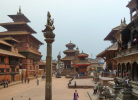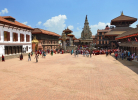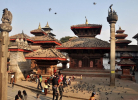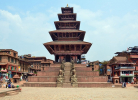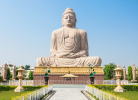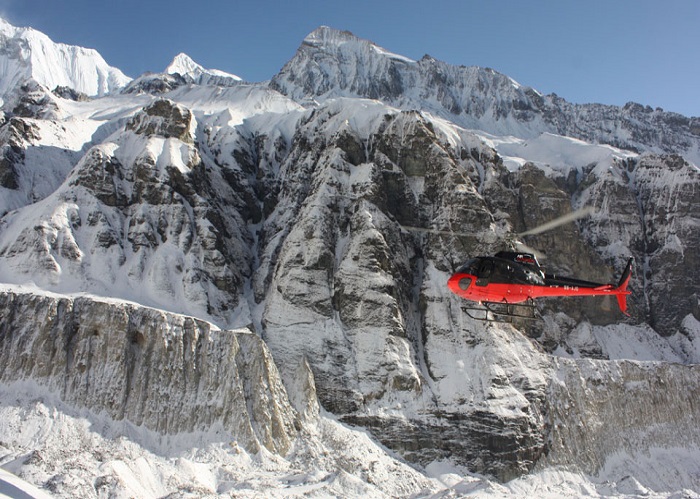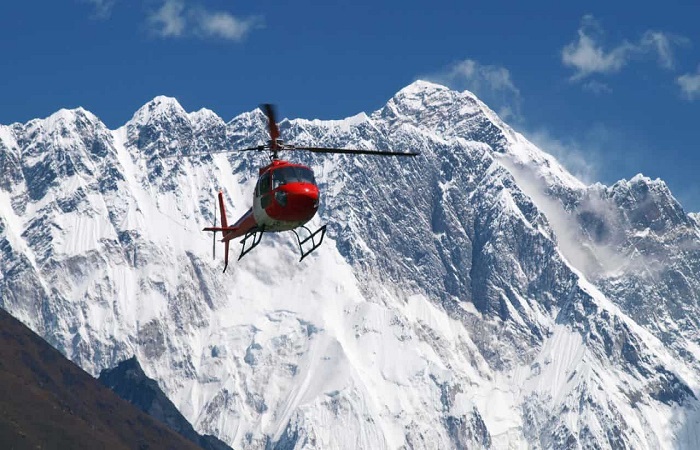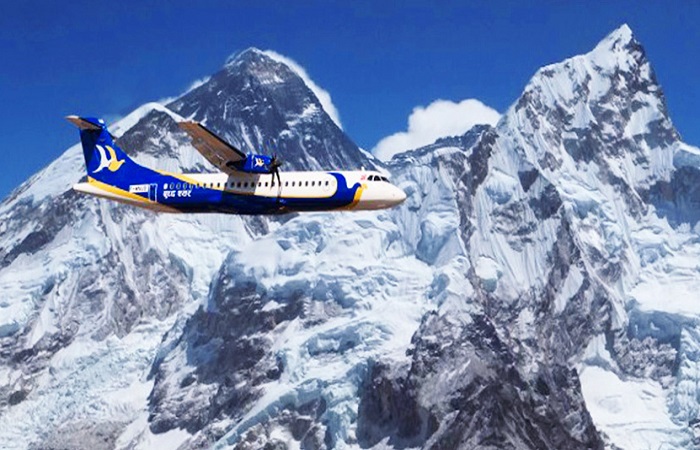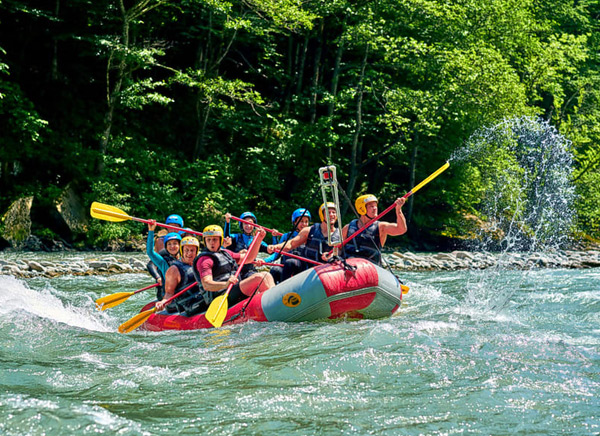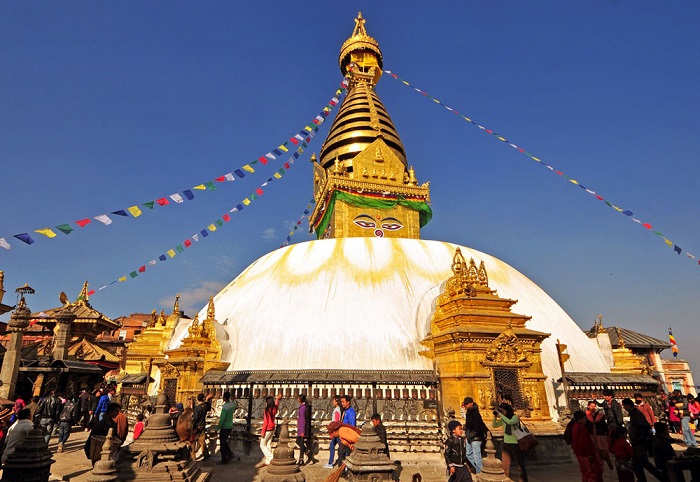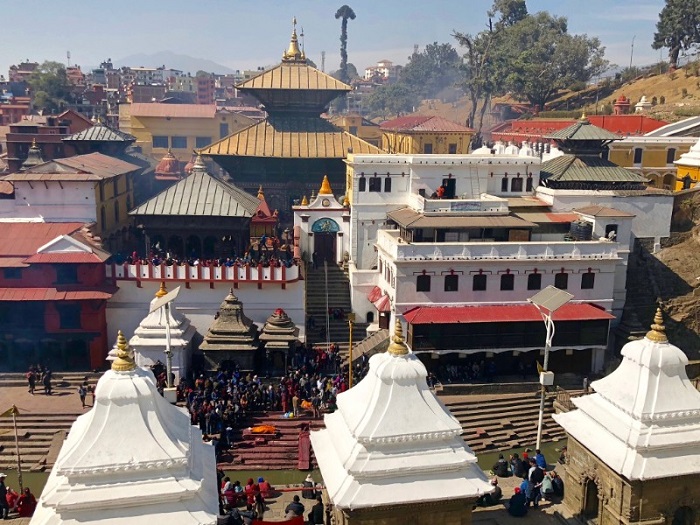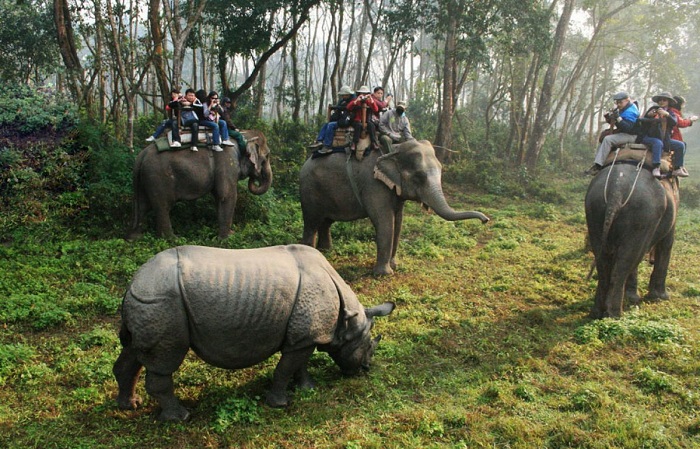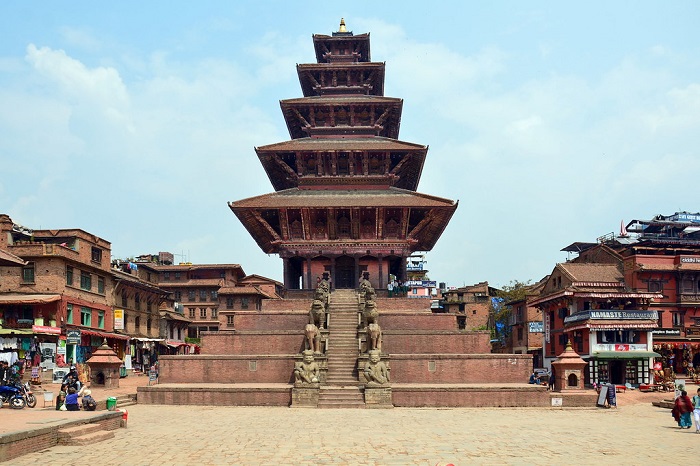Chitwan National Park, Nepal
The term Chitwan is translated in the local language as the ‘heart of jungle’. Chitwan National Park is one of the premier destinations of Nepal. This heritage site covers 932 square kilometers of grassland, marshland and forests. The region has a decent animal population and thus, spotting animals and birds is quite easier. If you were very lucky, you would spot the famous leopards of the region or sloth bear. Very rarely, you would spot the Royal Bengal Tiger.
Different Areas In The Park
Amaltari (Western sector) – This is one of the entrances for the park. This is preferred by the tourists as it is closer to the Mahendra Highway. This region has the Rapti, Narayani and Reu rivers. This is the right spot to explore to spot a lot of animals. Jeep safari and other safaris cover this region.
Kasara (Mid sector) – This region holds the museum and the park headquarters. You can find a famous religious site, Bikram Baba in this region. A little away from the headquarters, you will find the Gharial breeding center, where crocodiles, turtles and muggers are bred. This region is covered on foot, usually.
Madi-Bagai (Southern sector) – This is the deep forest region. Tourists usually are not taken to this part of the jungle.
Sauraha (Eastern sector) – This is the eco-tourism region. You can find many development activities like resorts, safari route, birdwatching sites and others here. Sauraha is another important entrance to the park. This region covers the Churia hill regions. You can find rare species in this region. Sauraha has the wildlife conservation program, souvenir shop, gift shops and others in the visitor center.
Flora of Chitwan national park
The basic flora of the region is Himalayan Subtropical Broadleaf Forest. This type of vegetation covers most of the land with Sal trees. These trees grow in the low-lying drained lands. The southern part of the park is covered with chir pine trees. The northern slopes of the region have both Sal trees and a few wild and colorful flowering species. Some of the shrubs found in this region are rosewood, elephant apple, grey downy balsam, axlewood, beleric and others.
Dry grasses are quite common here and thus, seasonal bushfire is natural. Recently, the alluvium deposited along the riverbanks is causing rhino apple trees and catechu to flourish in this region. Hill glory bower, velvety beautyberry and hill glory bower are some of the shrubs found in this region.
About 20% of the forest is covered with grasslands and savanna regions. This region holds more than 50 species of tallest grasses of the world. This includes elephant grass, giant cane, khagra reed and kans grass.
Fauna Of Chitwan National Park
Thanks to the diverse vegetation of the land, you can find numerous types of animals in this region. More than 700 species of fauna are spotted in this part. This excludes butterflies, insects and moth population. There are 19 species of retiles, 113 species of fishes and crocodiles and 68 mammals.
There are just 82 tigers in the park, as per 2002 survey. Thus, spotting them is not easy. However, you can easily spot a leopard, when compared to a tiger. This park has the largest population density of sloth bears. Other common mammals to spot here are striped hyena, honey badger, Bengal fox, wild dogs, spotted linsang, fishing cat, small Indian civet, jungle cat, Asian palm civet, mongoose and others.
There are more than 544 rhinos in this park. You can find the largest population of Indian Rhinoceros in this park, in Nepal. Seasonally, you can find wild elephant bulls, which migrate from Valmiki National Park to this park for mating elephant cows. If you are visiting right after a bushfire, you will spot gaur. In the deer family, you can find chital, sambar, red muntjac and hog deer. Four horned antelopes are found in the hill regions.
As mentioned before, there are more than 500 species of birds. This includes threatened species of birds too. The important birds to spot here are Bengal florican, swamp francolin, grass warblers, oriental darter, kingfisher, egret, stork, grey-crowned prinia and others. This park is one of the very few spots in the world to spot the endangered spotted eagle.
If you are visiting in autumn, you can find more than 160 migration bird species in this land like eastern imperial eagle, brahminy duck, fish eagle, bar headed geese, goosanders and others. The birds from southern latitude visit the country during summer. Top species to spot are Bengal pittas, flycatcher, paradise flycatcher and many others.
Climate of Chitwan National Park/h2>
The forest region experiences typical tropical monsoon climate. This climate provides high humidity throughout a year. Since the forest is located in the central zone of Himalayas, monsoon starts by mid of June and ends only by late September. This long monsoon season stretches for 15 weeks and provides 2,500 mm precipitation, on an average. By mid of October, the winter starts and cools down the place. However, rainfalls and mild showers can be expected until end of December.
By January, the temperature starts to raise slowly, but the overall climate will be cool. By end of March, the summer starts and humidity will be sky-high. The climate becomes very hot during the summer season. Summer starts in March and ends by June.
Best Time To Visit Chitwan National Park
The best time to visit this national park is from October to March. During this season, the sky is clear and temperature is cool. Thus, visibility is clear. In addition, by January, the villagers cut the phanta grass for their use. This also increases the visibility. By monsoon season, these grasses grow up to 8 m, thus spotting smaller mammals will be harder.
In addition, monsoon makes jeep safari harder. The safari is restricted only to the buffer zone during monsoon. Flooding is very common during monsoon season. Thus, it is best to avoid it.Summer is the right time to spot many predators. The smaller water sources inside the forest would be dried by summer and the animals come to the main water source to quench their thirst. Thus, spotting animals becomes easier. However, birdwatching is quite harder as many migration birds would have left the region.
Wildlife Safari Of Chitwan National Park
1. Jeep Safari
There are two options for jeep safari. The short safari lasts from 4 hours. This safari will take a maximum of 7 people per trip in one jeep. The second type is the full day safari. This safari starts early in the morning and go deep into the jungle. This safari has a higher chance to spot many animals.
2. Elephant Safari
This is the best option to spot rhinos and other large predators from close quarters. On top of this majestic creature, you are safe from many animals, as they fail to notice the humans on top of the elephant. You can go as close as one meter away from animals.
3. Canoe Ride
Canoe ride is available on the Rapti River inside the park. This is the best way to explore the shore regions to spot animals that come to quench thirst. You can spot crocodiles and numerous animals and birds, which rely on the water of the river. A boatman and guide would row you through the water route. You need not peddle yourself.
4. Jungle Walk
If you are ready for some physical activity, you can cover specific trails in the park on foot. The routes will cover small animals, colorful birds and interesting species. A guide will accompany each group to cover the park, safely and thoroughly. If you are into birdwatching, this is one of the best options.
5. Birdwatching Tour
This safari covers jungles, grasslands and river banks, where spotting birds is very easy. Professional nature guide accompanies tourists in this safari.
6. Elephant Breeding Center
This is the major attraction of the region. You can watch the calves playing, you can feed them, bathe them and take a ride on adult elephants.
Wildlife Safari Timing
- Timing – 6 am to 6 pm
- Safari Timing – 6 am to 6 pm (timing changes with season and availability of vehicle)
Entry Fee of Chitwan National Park
- Cost of Entry for Foreigners – 2000 NPR (valid for one day in park and the next day for buffer region if the ticket is purchased after 2 pm)
- Cost of Entry for Locals – 150 NPR
- Cost Of Entry For SAAR Citizens – 1000 NPR
- Children Below The Age Of 10 - Free
Jeep Safari
- Cost Of Short Jeep Safari – 2000 NPR
- Cost Of Full Day Safari – 3800 NPR
Elephant Safari
- Cost Of Elephant Safari For Foreigners– 2500 NPR Per Elephant (2 People)
- Cost For Locals – 200 NPR
- Cost For SAARC – 1000 NPR
Elephant Breeding Center
- Entry Cost For Foreigner – 60 NPR
- For Locals – 10 NPR
- For SAARC – 25 NPR
- Timing – 6 Am To 6 Pm
- Cost For Bathing Elephant – 200 NPR
Canoe Ride
- Half-Day Canoe Ride – 1400 NPR
- Full-Day Canoe Ride – 1800 NPR
Note : Cost and timing changes with season and demand.
How To Reach Chitwan National Park
The park is around 5 to 6 hours of drive from Kathmandu. This is the commonly chosen route as most of the tourists enter Nepal via Kathmandu airport. If you want to reduce the travel time, fly from Kathmandu to Bharatpur airport. From the Bharatpur airport, it would take only a few minutes to reach the park.From Kathmandu airport, seven flights fly to Bharatpur, every day. The fly time between the two destinations is just 25 minutes.
Best Places To Stay In Chitwan National Park
Inside the park, there are seven resorts run by government, which provides wildlife activities, lodging and food. Apart from these seven, there are numerous resorts, hotels and lodges around the park.
Conservation History of Chitwan National Park
The Royal Chitwan National Park came into existence in 1973. Prior to that, it was a protected hunting reserve from the aristocrats of Nepal and its foreign alliances. It is said that in 1911, King George V with his son killed 39 tigers and 18 rhino in a single safari in this region. Even after being a reserved hunting spot, the loss of habitat and human encroachment were carried on by illegal hunters and poachers.
In 1954, a large area of the forest region was converted into farmland, leading to habitat loss in a large range. By the end of 1960, there were only 20 tigers and 100 rhinos in this region. This decline became a big news and King Mahendra of Nepal immediately announced it to be a national park and banned poaching of animals. In 1984, the region became a heritage site. By 2000, the population of wildlife increased there were 544 rhinos and 80 tigers. There were 450 species of birds and 50 different mammals flourishing in the region. However, the Maoist rebellions controlled a larger region of the forest. They started selling animal parts to Tibet and China. The government is trying to control poachers and reduce habitat loss in this region.


